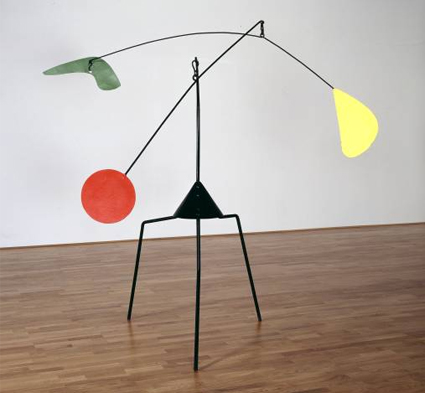A mobile, one might say, is a little private celebration, an object defined by its movement and having no other existence. It is a flower that fades when it ceases to move
Jean-Paul Sartre
THE AMERICAN artist Alexander Calder may not have conspicuously influenced British culture but he can be held partly responsible for the decoration of small children's bedrooms across the country. In the early Thirties, Calder devised a new kind of sculpture: a gracious, dangling wire and metal construction, designed to be gently stirred by draughts of wind or by the human touch. His friend Marcel Duchamp promptly thought up the term ''mobile'' to describe it.
Children's mobiles date back to long before the Thirties, but Calder did more than any other individual to extend and develop the form and his methods were rapidly imitated by mass manufacturers. So when young Eleanor or Florence or Arthur stare up at the bright cut-out shapes dancing on wires over their beds, they are all the involuntary inheritors of Calder's legacy.
The metamorphosis of Calder's invention, from modernist sculpture to modern toy, might not have en-tirely displeased him. His earliest works, engaging little figures fashioned from bits of carved cork and wire, were toys: tiny trapeze artists and sword-swallowers and lion-tamers whom Calder, in his adopted role as Monsieur Loyal the ringmaster, would animate for the amusement of his friends. Much later, when the Tate Gallery gave him a retrospective in 1964, Calder wrote to an acquaintance about the volume of fan mail he had received. ''Everybody,'' he noted, ''is under six.''
Calder's playfulness is much in evidence in the modest but gracious exhibition of his work currently oc-cupying the Sackler Galleries of the Royal Academy. Big Red is Calder at his most abstract, a constellation of thin red metal shapes...


